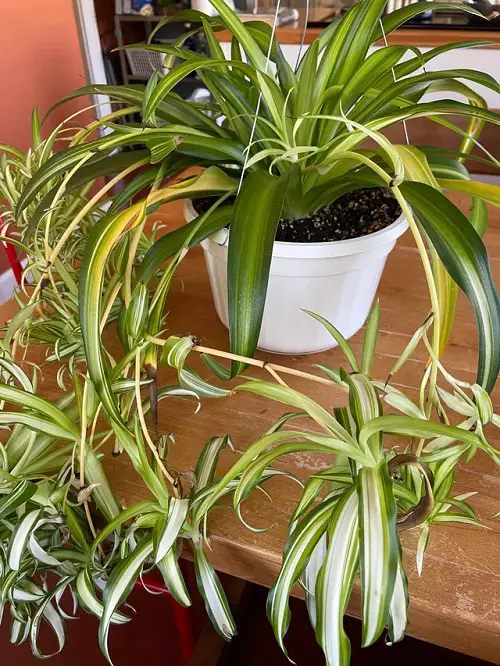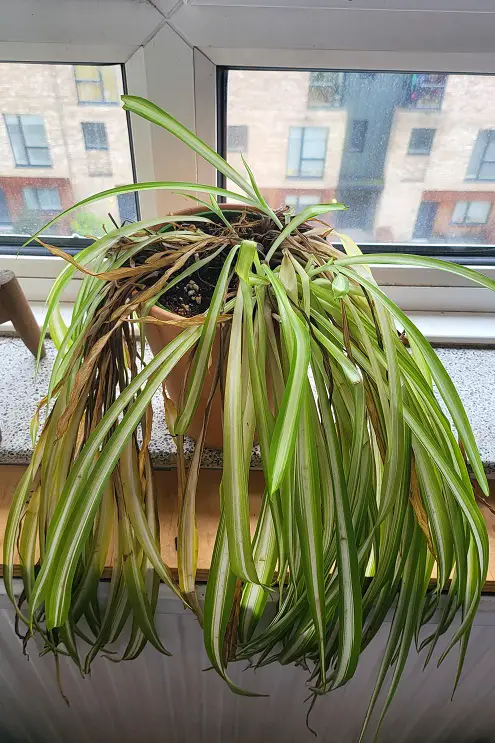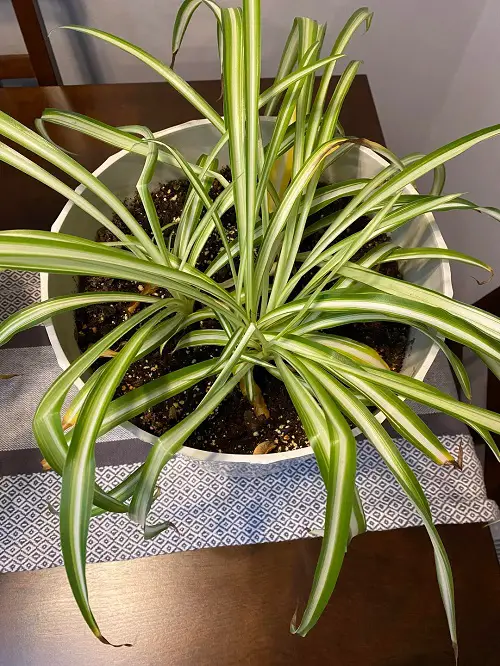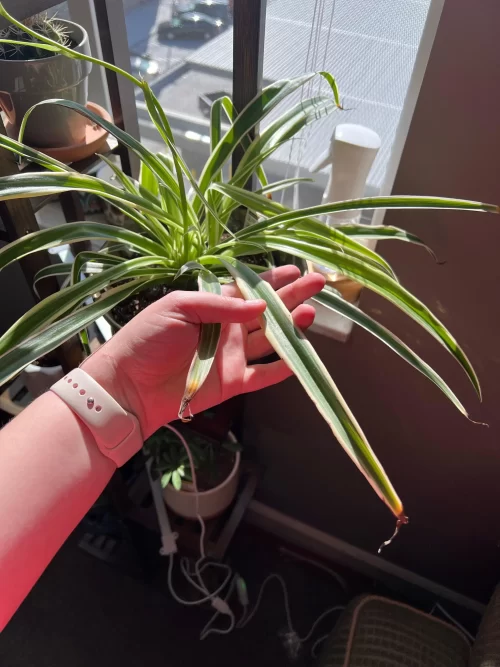Concerns about Spider Plant Leaves Breaking and Splitting are widespread and many people wonder how to prevent it. Here’s how!

Although spider plants are quite hardy and can survive a lot of abuse you throw at them, there are time when these beauties start to show splitting foliage, that takes away the charm off its show. We’ll tell you how to keep it in pristine condition!
Factors Causing Leaf Splitting in Spider Plants
1. Low Humidity

This is the BIGGEST reason behind spider plant leaves splitting.
These plants thrive in humid environments, and if the air in your home is too dry, the leaf tips may become dry and brittle, leading to splits or breaks in the entire length of it. This is especially common during winter when indoor heating systems can significantly reduce humidity levels.
So, what’s the best bet? You can use a humidifier, or group several plants together to create a humid environment. You can also keep its pot on a tray filled with pebbles and water.
2. Watering Issues
Overwatering can cause the roots to rot, depriving the plant of essential nutrients, while under-watering can make leaves dry, and become susceptible to splitting or breaking.
Water your spider plant only when half inch of the topsoil feels dry to the touch. Make sure the pot has holes in the bottom, so excess water can drain out thus preventing it from getting soggy. This way, you’ll keep your plant’s roots happy and healthy.
3. Nutrient Deficiency

A lack of essential nutrients such as nitrogen, potassium, or iron, can weaken the plant’s overall health thus making the leaves more susceptible to splitting or breaking.
During the active growing seasons of spring and summer, give your spider plant a boost by feeding it with balanced, liquid fertilizer (10-10-10), after diluting it to 1/2 of its strength, once in 5-6 weeks.
4. Insufficient Light
Spider plants need bright, but indirect light to thrive. If they are placed in low-light conditions, the leaves may become weak and more prone to splitting or breaking.
Place your spider plant where it can get bright, indirect sunlight all day long. An east facing location will be a god-send for these beauties as there, they can get the mild but direct morning sunlight for a few hours, too!
5. Temperature Stress

Spider plants prefer temperatures between 65°F and 86°F (18°C to 30°C). Exposure to extreme temperatures, whether too hot or too cold, can cause stress and lead to leaf damage.
Also, keep it away from AC and heating vents. While keeping it near a window, make sure the leaves are not touching the glass.
6. Pest Infestations
Certain pests such as spider mites or mealybugs can weaken the plant and cause leaf damage. Fungal or bacterial diseases can also contribute to leaf splitting or breaking.
Keep the plant in a well ventilated area, and regularly check your spider plant for pests, and if you find any, take action right away. Natural remedies, such as neem oil, can prove efficacious in this regard.
7. Physical Damage
Damage from pets, humans, or even strong winds can physically break the leaves. Any direct physical impact or rough handling can result in torn or split foliage, too.
Handle your spider plant with care and try not to move it around too much to avoid accidental damage. Treating your plant with care helps maintain its health and appearance.



